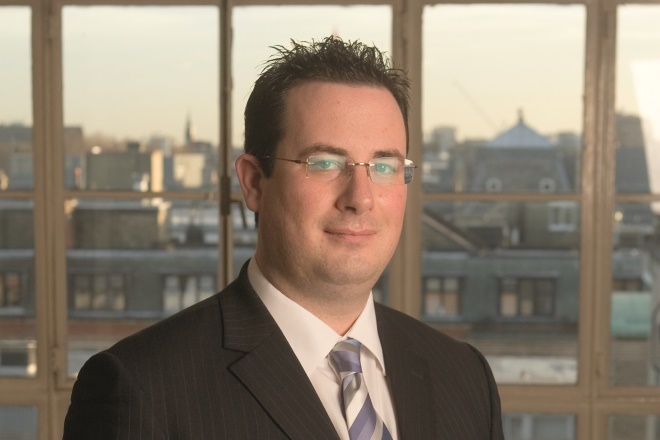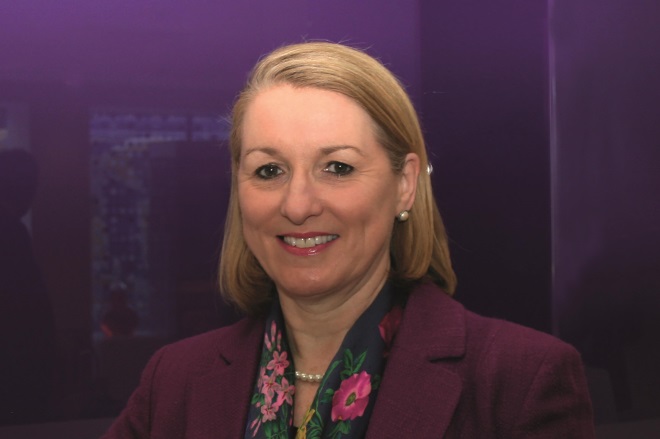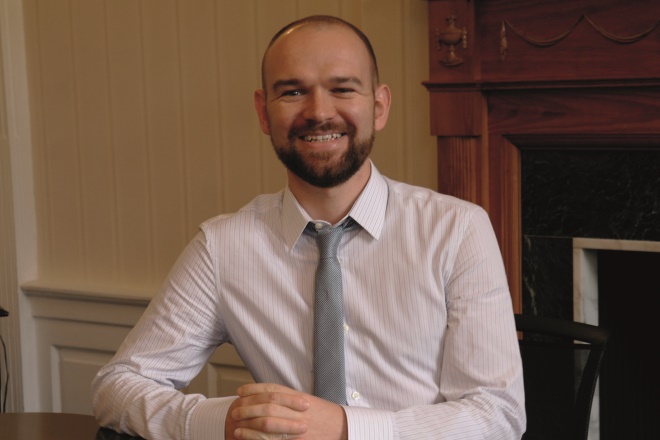
Otto Steininger / Ikon Images
A community pharmacist in England can now, with a patient’s consent, access their summary care record (SCR).This could be done, for example, to issue an emergency supply of a drug. Previously, they would have had to direct the patient to a GP-staffed urgent care centre, an out-of-hours service or even to accident and emergency. Despite progress, however, there is still a long way to go to reap the full benefits that pharmacy has to offer.
Pharmacist-conducted medication reviews will never deliver all they can until the pharmacist can see why a drug has been prescribed, and feed back their observations to other health professionals caring for the patient. Achieving this requires pharmacists to be able to read, and write to, the full GP patient record.
We are now being told that it is technologically feasible and we are looking at interoperability between GP and pharmacy systems
“Certainly this year I feel that we have made huge strides forward [in England],” explains Sibby Buckle, vice-chair of the English Pharmacy Board at the Royal Pharmaceutical Society (RPS) and chair of the RPS-hosted Pharmacy Digital Forum. “We are now being told that it is technologically feasible and we are looking at interoperability between GP and pharmacy systems.”
Pharmacy organisations in Britain have been campaigning for all pharmacists to have read/write access to the full patient record for more than a decade. Although progress is being made in England and Wales — less so in Scotland — the prospect of a shared patient record is still several years away. Pharmacists within other European countries, and further afield, have already been benefiting from access to patient records for years.
Progress in England
The SCR in England is derived from the full GP record and contains key demographic details, recent prescribed medicines, allergies and adverse drug reactions. It is stored on a central data spine. When a patient allows access, a pharmacist or other health professional pulls the record from the spine by logging-in using their NHS Smartcard.
It is possible to include additional information within the SCR, such as diagnosis and treatment, including minor surgery and vaccinations, but this is not yet widespread. The GP will ask for patient consent to upload this information, but it is up to the patient what details are included. Patients who are most likely to have an enhanced SCR include those receiving end-of-life care and those with complex long-term conditions.
One of our biggest challenges is, if you don’t know the reason for prescribing [a drug], you have to infer that from the wider medication knowledge you have for the patient, and you can’t necessarily make a good assessment of the ongoing need for prescribing
Once information, such as diagnoses, is available, it will be easier to conduct a clinically focused medication review, says Alastair Buxton, director of NHS services at the Pharmaceutical Services Negotiating Committee. “One of our biggest challenges is, if you don’t know the reason for prescribing [a drug], you have to infer that from the wider medication knowledge you have for the patient, and you can’t necessarily make a good assessment of the ongoing need for prescribing,” he explains.

Source: Pharmaceutical Services Negotiating Committee (PSNC)
Alastair Buxton, director of NHS services at the Pharmaceutical Services Negotiating Committee, believes that writing to the GP patient record using standardised datasets, rather than free text, is not far away
Any access to the GP record, or extended SCRs once they are widespread, is likely to require pharmacists to share the patient information they hold with GPs, says Buckle. “What is being proposed is that, potentially, the GPs look at the pharmacy patient medication records because we hold a wealth of information in the pharmacy that currently the GPs don’t have access to.”
Buxton points out that there are some local initiatives, such as in Leeds and Manchester, where data are being extracted from GP records, social care records and hospital records into one portal. Patients, and clinicians with patient consent, can then access the information.
“I think that is the kind of development we are going to see a lot more of at a local level over the next couple of years,” Buxton says, “because a lot of the sustainability and transformation partnership (STP) footprints have been looking at how to share records more, and more widely, using this technology.”
Speeding up progress
Experience shows that it usually takes around five years between getting government agreement on something to making it a reality, says Buckle. But what might speed access to the full record in England, she says, is that the government has pledged that patients will have access to their own records by 2020. Once there is an app through which patients can access their own records “that takes away a lot of the sensitivity around who owns the data and that could change the landscape quite dramatically”, she explains.
But ultimately, for pharmacists to have the most impact, they need to be able to write to the record — for example, to record information such as having administered a flu vaccine or make a note about over-the-counter medicines sold to the patient.
“Being able to write on the record will improve the communication between the pharmacist and the GP practice. I think it will break down some of the silos that exists between the professions,” says Buckle.
Being able to write on the record will improve the communication between the pharmacist and the GP practice. I think it will break down some of the silos that exists between the professions
GPs frequently write prescriptions for several medicines, but patients will ultimately decide what they will take — sometimes because of the cost of all the medicines combined or because they still have stocks of a regular medicine. “We have no way of feeding that back electronically to the GP,” Buckle says.

Source: MAG / The Pharmaceutical Journal
Sibby Buckle, vice-chair of the English Pharmacy Board at the Royal Pharmaceutical Society, says that patients being able to access their own records might speed access for pharmacists
Buxton believes that writing to the record using standardised datasets, rather than free text, is not far off. NHS Digital is working with Pinnacle Health Partnership, he says, on how services undertaken by pharmacies, such as flu vaccination, could be incorporated in the GP record.
“At the moment [pharmacy systems] will allow a message to be sent to the GP systems using NHS mail with the data that they need, but not in a way that inserts the data into the GP’s record,” he explains. If the information is not inserted within the record, the relevant clinical coding is not added, and data, such as the batch number, used to monitor the vaccine’s effectiveness, are hidden[1]
. “The work [with Pinnacle Health] is looking at how that could be done and trying to get that in place ideally for next flu season,” adds Buxton.
While there is still a long way to go, a vast amount of progress has been made. It was not until 2013 that the government committed to allowing pharmacists in England even access to the SCR. This was first tested in small-scale pilots before being gradually rolled out. In the past year, pharmacist access has exploded — from fewer than 50% of pharmacies a year ago to 97% by December 2017 — largely because of quality payments, which incentivise use of the SCR. And in November 2017, pharmacy minister Steve Brine expressed his “full support” for NHS England plans to enable community pharmacies to have full read/write access to patient primary care records, which, he said, he would like to see “as soon as possible”.
Progress in Wales and Scotland
England is ahead of the other home nations in terms of pharmacist access to records. In November 2017, Vaughan Gething, Cabinet secretary for health, wellbeing and sport, announced that pharmacies in Wales with access to the Choose Pharmacy IT system would be able to access the Welsh GP record — a summary of the full GP patient record held by surgeries — by March 2018[2]
. Information about prescribed medicines (name, strength, dose, etc) will be imported directly into the Choose Pharmacy application. Pilot studies took place in four pharmacies in December 2017 and will be rolled out across the whole pharmacy network by March 2018.
Gething also announced plans to “pilot a test-and-treat module for diagnosis and management of bacterial throat infections by community pharmacists, in which the NHS Wales Informatics Service will pilot electronic transfer of records from pharmacies to GPs”. This will allow information about pharmacy consultations to be added to the GP record and, if successful, the same mechanism could be applied to other relevant pharmacy services.
For many years Scotland was a trailblazer in electronic records, with pharmacists there being able to access information in the electronic care summary, albeit by a circuitous route via NHS 24.
There are two electronic summary record systems in Scotland: the electronic care summary, which is the tranche of basic information that is uploaded from all GP surgeries at the end of each working day, including patients’ basic vital details and an overview of what medication they are on; and the key information summary, which contains a more extended range of information that anticipatory care planning nurses and social services might have access to.
However, community pharmacists are not routinely given access to either of these records. Some pharmacists have gained access to the electronic summary record, but this has usually been in response to pharmacists stepping in to take on extended roles, for example when a GP surgery is in crisis.
If necessary, pharmacists can access a patient’s electronic summary record, with their consent, via NHS 24. “Most pharmacists use it when people come and need access to medicines that they’ve perhaps run out of. NHS 24 has to speak to the patient to get their consent and then go back to speaking to [the pharmacist], so it can be a whole rigmarole and it’s quite a strain on NHS 24,” admits Adam Osprey, policy and development pharmacist, Community Pharmacy Scotland. “We would look for role-based access to appropriate parts of the clinical record when we need it and with patient consent each and every time we were to access it,” he explains. Ideally, this should be write access, he adds, so that information from interventions can be recorded and accessible to other health professionals.

Source: Courtesy of Adam Osprey
Adam Osprey, policy and development pharmacist, Community Pharmacy Scotland, explains that pharmacists in Scotland have to access the electronic summary record via NHS 24
We would look for role-based access to appropriate parts of the clinical record when we need it and with patient consent each and every time we were to access it
Singapore leads the way
Compared with some countries in Europe and further afield, pharmacy access to records in Britain seems to be lagging behind. The International Pharmaceutical Federation (FIP) has surveyed its members on access to electronic health records and shared its headline findings with The Pharmaceutical Journal. The data show a varied picture.
The most highly advanced system is in Singapore, where pharmacists can access the full record and write to it (see Panel 1). Information is drawn from public and private health systems and is accessible through an online portal.
Singapore were granted reading and writing rights in 2016 … but then Singapore is a highly developed country but also a very small country, which is in a way more manageable
“Singapore, we understood, were granted reading and writing rights in 2016, so that is a pretty unique situation,” says Gonçalo Sousa Pinto, manager, profession development support, FIP, who conducted the survey. “But then, Singapore is a highly developed country but also a very small country, which is, in a way, more manageable. It has a population of just over 5 million.”

Source: International Pharmaceutical Federation (FIP)
Gonçalo Sousa Pinto, manager, profession development support, International Pharmaceutical Federation (FIP), says that giving different health professions access to an electronic health record improves the efficiency of the system by avoiding hospital admissions, readmissions and visits to GPs
Low Cheng Ooi, chief clinical informatics officer, Integrated Health Information Systems, and chief medical informatics officer at the Ministry of Health in Singapore, explains that pharmacists from public healthcare institutions were given access from the outset. “This user group has since been expanded to include pharmacists from the private space,” he adds.
“Feedback on the use of the National Electronic Health Record System from patients has been generally positive, with many recognising its benefits, especially during emergencies or if the patient is incapacitated. For patients who express privacy concerns, they have the option to opt out, but are counselled on the implications of doing so,” says Ooi.
Panel 1: Singapore
The National Electronic Health Record System (NEHR) has been progressively deployed in Singapore since 2011 to public, as well as private, healthcare institutions, to achieve the vision of ‘one patient, one health record’. The aim is to enable healthcare professionals to provide better and safer care, as well as team-based care across different healthcare providers.
Low Cheng Ooi, chief clinical informatics officer, Integrated Health Information Systems, and chief medical informatics officer at the Ministry of Health in Singapore, explains that data are not entered directly into the NEHR but flow from the back-end systems at the institutions that are on board. “Data entered by healthcare professionals within their own electronic medical record systems, such as prescribed or dispensed medications, flow into the NEHR in this manner,” Ooi says.
Ooi adds: “The new Patient Medication’s List module further supports pharmacists in medication reconciliation for patients who may visit multiple care providers. For research and health insights, anonymised data from the NEHR are used. Patients can also access part of their health record through a secure mobile app, HealthHub.”

Source: Integrated Health Information Systems (IHIS)
Low Cheng Ooi, chief clinical informatics officer, Integrated Health Information Systems, and chief medical informatics officer at the Ministry of Health in Singapore, explains that the National Electronic Health Record System has been progressively deployed in Singapore since 2011 to public as well as private healthcare institutions
Progress in Europe
Pinto is also impressed by the Elektronische Gesundheitsakte (ELGA) in Austria, which pulls a wide variety of information from different sources, such as GP surgeries, hospitals, pharmacies, laboratories and radiology services, and allows it to be shared over a secure network (see Panel 2).
Osprey of Community Pharmacy Scotland is “bowled over” by what Estonia is doing (see Panel 3). He explains that people in Estonia carry an identity card, which they can use to access, or give health professionals and others access to, health and other information about themselves.
The Netherlands also has an advanced system compared with Britain, which allows sharing and exchange of medical data (see Panel 4). With the permission of a patient, and if necessary for treatment, a health professional can access health information from other providers via the National Switch Point (LSP) using the patient’s citizen service number. More than 95% of pharmacies in the Netherlands use the LSP.
Panel 2: Austria
Development of the Elektronische Gesundheitsakte (ELGA) began in 2006. ELGA’s strands include: eMedikation, an electronic prescription system that allows pharmacists to check that treatments are being followed correctly, and automatically identifies medicines that are likely to interact; medical reports; and tools for sharing X-rays and test results with doctors. Patients can access the information through their mobile phone or by using their eCard, which they can hand over to health professionals to enable them to also access information.
Patients can give healthcare facilities unlimited access to their record, and choose to hide specific information. Other hospitals or GP surgeries treating patients can gain access to ELGA for 28 days, and pharmacies for 2 hours, after the eCard has been plugged in[3]
[4]
.
Panel 3: Estonia
Health professionals in Estonia can access an agreed data set about a patient using the patient’s identity card. Patients can also share limited data with insurers and state agencies to prove, for example, fitness to drive information. The patient even uses their identity card to pick up drugs prescribed to them by handing it over to the pharmacist to have them dispensed.
Under the system, which began in 2008, data are extracted from various health systems and viewed through an online portal. The system uses blockchain technology, so rather than storing and administering data in a single database, multiple copies of the same data are synchronised in ledgers shared across a network of users, meaning the information is always up-to-date[5]
[6]
.
Panel 4: The Netherlands
Health professionals in the Netherlands can access health information from other providers via the National Switch Point (LSP), using a patient’s citizen service number. LSP is not a database; patient data remain in the systems of their care providers — the GP and the pharmacy.
Pharmacies make information available, such as the medication provided to the patient in the past six months, and any intolerances, contraindications and allergies. Similarly, pharmacies can request information from the GP via the LSP on intolerances, contraindications and allergies, and prescriptions issued, as well as details of prescriptions issued by specialist doctors and, in future, laboratory test results.
Pharmacy-driven initiatives
In most countries, data-sharing initiatives have been driven by the government and the ministries of health, but both French and Belgian systems are different, having been the brainchild of, and implemented by, pharmacy organisations, Pinto says. “[These] systems also include non-prescription medicines so pharmacists can have a full overview of all the medicines the patient is taking or has acquired.”
France has two electronic patient record systems — the Dossier Pharmaceutique, which evolved from community pharmacy records, and the Dossier médical partagé, which is based on doctors’ medical records (see Panel 5). Pharmacists must seek patients’ consent to access these records[7]
.
Like France, Belgium also has a system created by pharmacy, although it is exclusively for community pharmacists (see Panel 6). The pharmacy professional associations in the country were convinced that sharing pharmaceutical records on patients’ medication history could support pharmacists in daily practice, which would ultimately result in better care. So they created and financed the Belgian Shared Pharmaceutical Record (SPR), which was implemented in 2013. Participation is voluntary, but to date, 97% of all Belgian community pharmacists are signed up, and data are held on more than 7.5 million patients, around 70% of the Belgian population.
In 2015, the Belgian Pharmaceutical Association conducted research with the University of Brussels, which found that 91% of Belgian pharmacists believed that the SPR helped increase the quality of care they provided and 56% believed it supported them to make an informed decision through improved monitoring of compliance; detecting drug interactions; solving administrative issues, such as unreadable prescriptions or missing dosages; and detecting drug misuse by patients.
Sustainable health systems
Across the world, says Pinto, community and hospital pharmacists are taking on increasingly clinical roles but without access to the necessary information in the patient record, it is difficult to do this effectively. In addition, the full benefits of these services will not be reaped if the intervention is not recorded in the patient’s record and shared with other health professionals.
The ability to record interventions, he says, means that pharmacists “become co-accountable and co-responsible for the patients’ outcomes and for the clinical decisions”. “Giving different health professions access to an electronic health record improves the efficiency of the system by avoiding hospital admissions, readmissions and visits to GPs,” emphasises Pinto. He believes that access is crucial for the future of health systems internationally because it can reduce health and pharmaceutical expenditure. “This is not only a matter of getting access for pharmacists and improving their specific role, but it is a matter of ensuring the efficiency and sustainability of health systems.”
Panel 5: France
The Dossier Pharmaceutique evolved from community pharmacy records in 2004. It automatically records medicines dispensed by pharmacists for four months, and vaccines for 21 years, and can also record over-the-counter medicines if the patient is identified in the system at the time of purchase. The database is also accessible to hospital pharmacists and doctors and, since 2010, has included a mechanism to launch an alert or recall on a specific drug[8]
. The Dossier médical partagé is based on doctors’ medical records, including a summary of the patient’s medical history, medication, records from consultations, admissions to hospital and results from imaging and laboratory tests.
Panel 6: Belgium
Whenever a drug is dispensed in a pharmacy subscribed to the Belgian Shared Pharmaceutical Record (SPR) service, the information is sent to a central database where it is held for a year. Information on over-the-counter medicines is also sent if the patient is identified. Manon Buyl, a pharmacist expert at the Belgian Pharmaceutical Association, explains that approval was required from the Belgian Privacy Commission before the SPR service could begin. She adds that pharmacists register for the service by signing a contract so that, in case of a data breach, they can delegate their legal responsibilities to the creator of the service.

Source: Courtesy of Manon Buyl
Manon Buyl, a pharmacist expert at the Belgian Pharmaceutical Association, explains that approval was required from the Belgian Privacy Commission before the Belgian Shared Pharmaceutical Record service could begin
Reading this article counts towards your CPD
You can use the following forms to record your learning and action points from this article from Pharmaceutical Journal Publications.
Your CPD module results are stored against your account here at The Pharmaceutical Journal. You must be registered and logged into the site to do this. To review your module results, go to the ‘My Account’ tab and then ‘My CPD’.
Any training, learning or development activities that you undertake for CPD can also be recorded as evidence as part of your RPS Faculty practice-based portfolio when preparing for Faculty membership. To start your RPS Faculty journey today, access the portfolio and tools at www.rpharms.com/Faculty
If your learning was planned in advance, please click:
If your learning was spontaneous, please click:
References
[1] de Lusignan S, Hoghton M & Imran I. Flu vaccination by pharmacists leads to suboptimal medical records. BMJ 2017;359:j5084. doi: https://doi.org/10.1136/bmj.j5084
[2] Community pharmacists in Wales to have access to GP records by March 2018. The Pharmaceutical Journal; online 30 November 2017. doi: 10.1211/PJ.2017.20204037
[3] ASIP Santé (L’Agence Française de la Santé Numérique). Austria’s ELGA system. Le Mag issue 4, 16 October 2012. Available at: http://esante.gouv.fr/en/the-mag-issue-4/austria-s-elga-system (accessed January 2018)
[4] Stark C. What is ELGA and how is it implemented? Presented at Österreichischer Schilddrüsen-Dialog (Austrian Thyroid Association’s Austrian Thyroid Dialogue 2016), Olympia Sport and Congress Centre, Seefeld, Tirol, Austria. 17 March 2016. Available at: http://www.schilddruesengesellschaft.at/sites/osdg.at/files/upload/1%20Stark%20-%20ELGA%20und%20ihre%20Umsetzung.pdf (accessed January 2018)
[5] Marshall J. Estonia prescribes blockchain for healthcare data security. Blog, Health Matters. PwC, 16 March 2017. Available at: http://pwc.blogs.com/health_matters/2017/03/estonia-prescribes-blockchain-for-healthcare-data-security.html (accessed January 2018)
[6] Estonian eHealth and the blockchain. Review, smart insights for a digital world, Gemalto, 21 June 2017. Available at: https://www.gemalto.com/review/Pages/Estonian-eHealth-and-the-blockchain.aspx (accessed January 2018)
[7] Le Dossier Médical Partagé (DMP), Ministère des Affaires Sociales et de la Santé, République Française. Available at: http://www.dmp.gouv.fr/ (accessed January 2018)
[8] What is the Pharmaceutical Record [Dossier Pharmaceutique]? Ordre national des pharmaciens (The French Chamber of Pharmacists), 21 September 2017. Available at: http://www.ordre-pharmacien.com/index.php/The-French-Chamber-of-Pharmacists/What-is-the-Pharmaceutical-Record-Dossier-Pharmaceutique (accessed January 2018)


